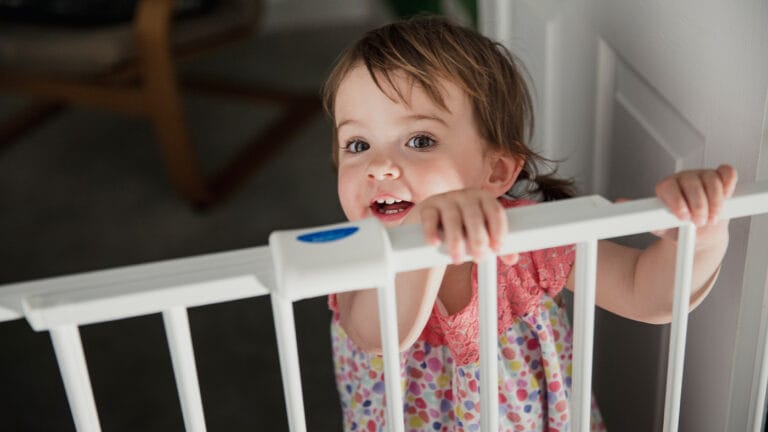Bedwetting can be embarrassing for kids, but it impacts all of us at least once in our lives. Many kids go through some period of Bedwetting between toilet training and adolescence, and a substantial portion of us also deal with it later in life. It’s estimated that between 10 – 15% of children wet the bed until at least age six and 1 – 2% of people continue to have some level of Bedwetting into adulthood.
Nighttime bladder control is something all kids have to learn. It’s a normal part of growing up, even if people don’t talk about it much. In fact, Bedwetting can even resurface in adulthood during periods of extreme stress, such as bringing home your first child.
Why Bedwetting Happens
While Bedwetting can impact anyone, it is more common in males than females. Additionally, a child is more likely to struggle with Bedwetting if they have a close relative with a history of Bedwetting, suggesting there’s a genetic component. That said, Bedwetting can also be driven by physical, psychological, and emotional causes.
The most common kind of Bedwetting is known as primary nocturnal enuresis. It is most often associated with some combination of increased urine production, small bladder capacity, or an overactive bladder. Basically, your kiddo’s tiny body is making more urine than they can hold overnight, and they don’t wake up when their body signals the need to void. The good news is that primary nocturnal enuresis typically resolves on its own as your child grows.
Secondary nocturnal enuresis is less common and is identified by a period of at least six months of nighttime dryness followed by the onset of renewed Bedwetting. This type of Bedwetting can be caused by many things such as stress, urinary tract infections, or more serious conditions like diabetes. Often, Bedwetting resolves on its own but it may be necessary to identify the cause of Bedwetting to successfully treat it.
The Power of Patience and Positivity
As previously noted, Bedwetting is usually not cause for alarm and is likely to resolve without any intervention. Your main job as a parent or caregiver is to pay attention (in case it needs medical intervention), be positive, helpful, and supportive. Most of all, be patient.
Washing soiled bed sheets isn’t anyone’s idea of a good time and Bedwetting can become increasingly frustrating, especially if you feel like there’s no end in sight. However, it’s important to remember that Bedwetting isn’t intentional, and it doesn’t improve with punishment. In fact, the threat of punishment (real or perceived) adds stress, which could make things worse.
Try gentle behavioral changes like reducing or restricting fluid intake in the hour before bedtime, maintaining a regular sleep schedule, and encouraging bathroom time before bed. Patience really is your most valuable asset. With or without intervention, Bedwetting usually resolves with time. Your positive, enthusiastic support during the transition can only make things smoother.
Bedwetting: Prevention, Treatment, and Intervention
Prevention
- Bladder training
- When your child is ready to start using the toilet, establish a regular schedule for bathroom time every 2 or 3 hours.
- You can adjust the window over time as you and your child become familiar with their body clock.
- Bathroom buffer
- Encourage your kiddo to spend a little extra time on the toilet to make sure they’re really finished.
- Your child may be excited to get back to what they were doing before or even hesitant about using the toilet, causing them to leave before they’re done.
- A couple extra minutes can help to make sure they know what it feels like to be finished and help them get through to their next toilet appointment.
- Reinforcing these habits during the day may help reinforce behaviors and signal recognition into nighttime.
- Behavioral changes
- Encourage bathroom time before bed alongside other routines like brushing teeth.
- Reduce fluids the hour before bed.
- Establish and maintain a consistent bedtime routine.
At-home intervention
- Active participation
- If more active intervention is needed, it’s critical that both you and your child are engaged in addressing the issue. You can’t badger your kid into participating while keeping the mood positive, so look for a way to get them engaged.
- Moisture alarms
- You may be tempted to wake your child up during the night to use the bathroom, but research has shown this isn’t effective because it isn’t tied to your child’s body signals.
- Moisture alarms can be more effective because they wake your or your child when they start to void.
- If the alarm wakes your child, have them get up and finish using the bathroom before changing sheets and getting back to bed.
- Waterproof sheets
- Even if you’re not using an alarm, waterproof sheets can protect mattresses and other bedding while making cleanup easier.
Medical Treatment
- Identifying the root cause
- Your child’s doctor will look for underlying causes which may include gathering medical history, urine tests, and images of the kidneys, bladder, and other parts of the urinary tract.
- If there is a physical cause, it may be treatable with medication or surgery.
- If a behavioral or environmental cause is identified, it may be treatable with additional at-home strategies, or even therapy to help address the source of your child’s stress.
Whatever treatment or intervention path you take, it’s important to know that you may not see results right away. It can take weeks or months to establish and reinforce recognition of body signals and nighttime bathroom habits. But remember, your team of pediatricians and therapists at Families First Pediatric are here to help.





